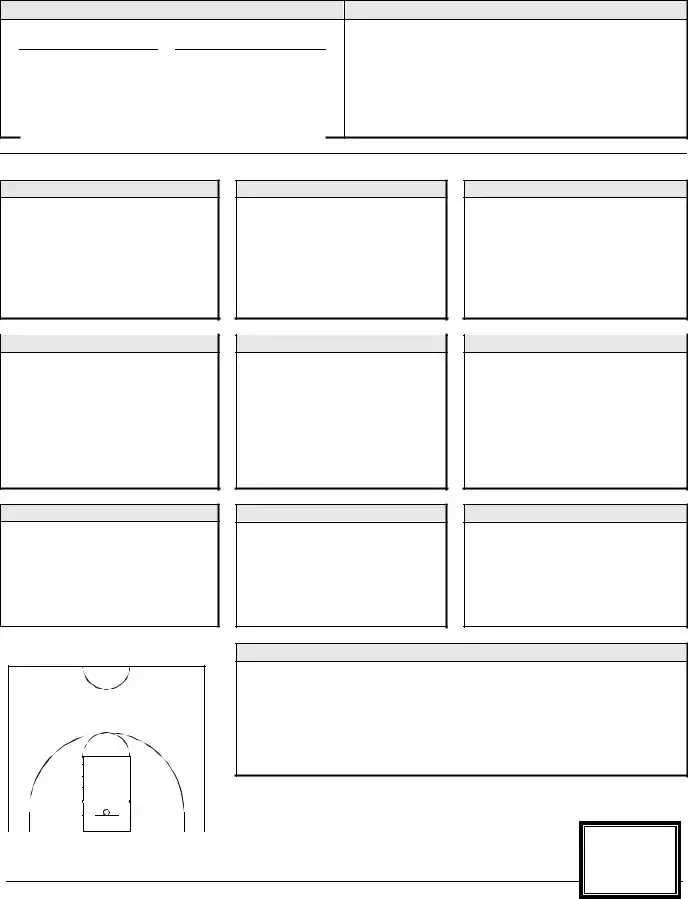The Player Performance Evaluation form closely resembles the Sports Skills Assessment form. Both documents aim to evaluate an athlete's abilities across various skill categories. The Sports Skills Assessment focuses on specific technical skills, such as shooting, passing, and defense, similar to the Basketball Evaluation form. Each section allows evaluators to mark proficiency levels, ensuring a comprehensive analysis of the athlete's strengths and weaknesses.
Another document that shares similarities is the Athletic Performance Review. This review assesses an athlete's overall performance in multiple sports disciplines. Like the Basketball Evaluation form, it includes categories such as speed, agility, and teamwork. The Athletic Performance Review provides a holistic view of an athlete's capabilities, helping coaches identify areas for improvement and development.
The Individual Skill Development Plan also aligns with the Basketball Evaluation form. Both documents are designed to track and enhance an athlete's skills over time. The Skill Development Plan includes specific goals and benchmarks for improvement, much like the evaluation criteria outlined in the Basketball Evaluation form. This document serves as a roadmap for athletes to achieve their performance objectives.
The Player Development Report is another similar document. It focuses on an athlete's growth and progress in their sport. The Basketball Evaluation form assesses current abilities, while the Player Development Report tracks changes over time. Both documents emphasize feedback and recommendations, fostering an environment for continuous improvement.
The Coaching Feedback Form mirrors the Basketball Evaluation form in its purpose to provide constructive criticism. This document allows coaches to evaluate players based on specific criteria, including teamwork, attitude, and skill execution. Like the Basketball Evaluation, it uses a rating system to quantify performance, making it easier to identify areas needing attention.
The Team Performance Assessment also shares characteristics with the Basketball Evaluation form. While the latter focuses on individual players, the Team Performance Assessment evaluates the collective performance of the team. Both documents highlight strengths and weaknesses, encouraging targeted training and development strategies tailored to improve overall performance.
The Game Performance Analysis is another document that serves a similar function. It breaks down an athlete's performance during games, assessing skills like shooting accuracy and defensive effectiveness. Much like the Basketball Evaluation form, it provides a structured approach to evaluating performance, allowing coaches to make informed decisions about training and strategy.
Lastly, the Skills Inventory Checklist resembles the Basketball Evaluation form in its structured assessment of skills. This checklist provides a comprehensive overview of an athlete's abilities in various areas, including technical skills and athleticism. Both documents aim to create a detailed profile of the athlete, facilitating targeted coaching and development efforts.

